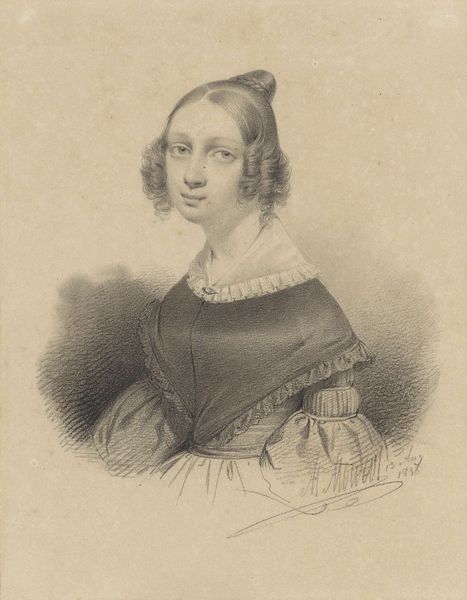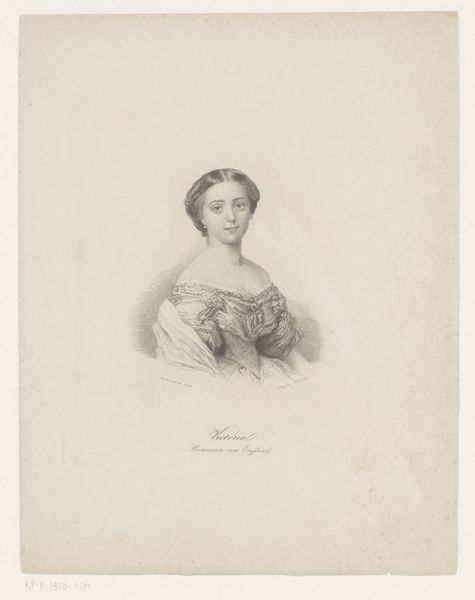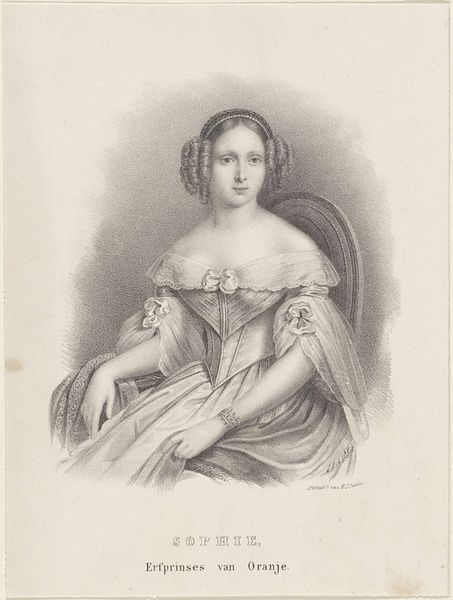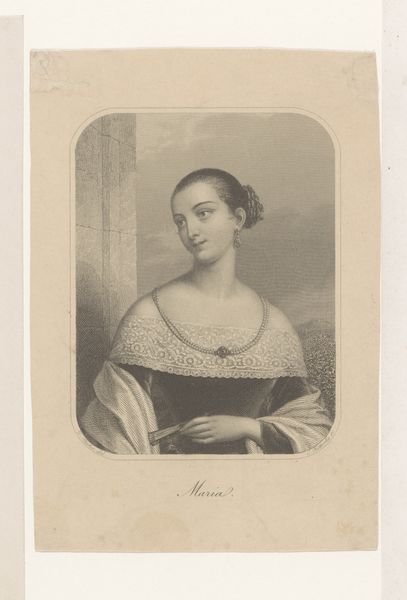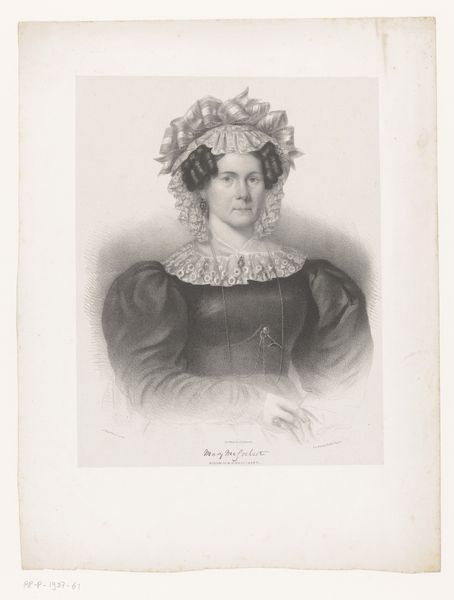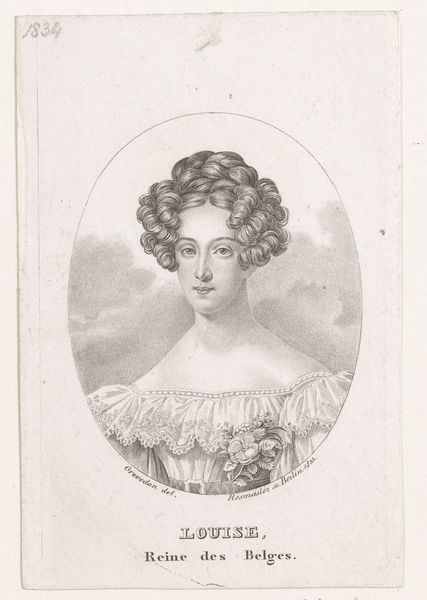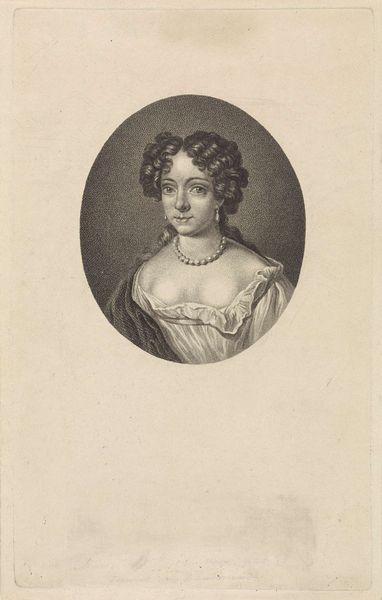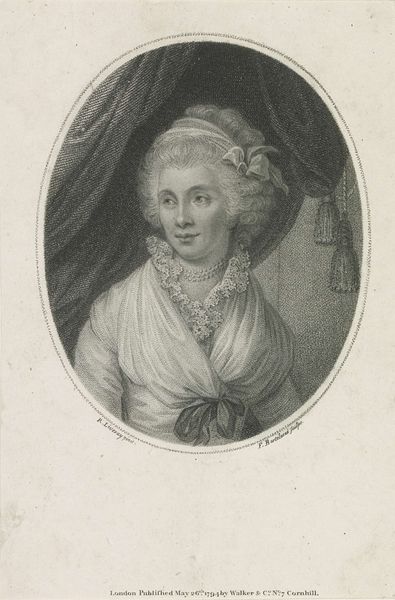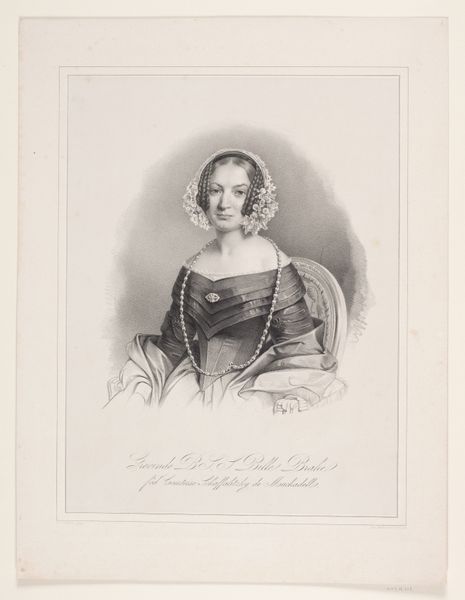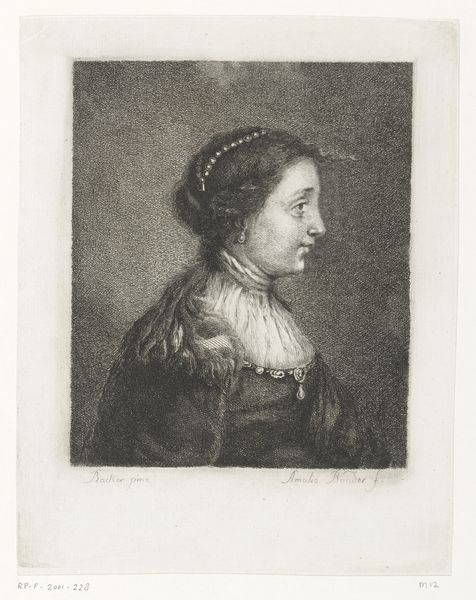
lithograph, print
#
pencil drawn
#
amateur sketch
#
light pencil work
#
lithograph
# print
#
pencil sketch
#
portrait reference
#
pencil drawing
#
portrait drawing
#
pencil work
#
watercolour illustration
#
watercolor
Dimensions: 273 mm (height) x 177 mm (width) (bladmaal)
Curator: This is a lithograph, simply titled "Amalie Rieffel," created in the 1840s by Emil Ditlev Bærentzen. Editor: My first thought is how delicate the linework is! It’s almost as if the subject might float right off the paper. There's an incredible fragility here. Curator: It's a beautiful example of early lithography’s role in portraiture. Think about the accessibility it offered! This print democratized image-making, making portraits available beyond the wealthy elite. Editor: Absolutely. Lithography provided a way to disseminate likeness, but what fascinates me is the material reality: the artist carefully building the image through layers of grease and ink on stone. It seems almost contradictory that something so seemingly heavy produced a piece that appears to be light and ephemeral. Curator: Right, and in that period, portraiture held such societal weight. A likeness wasn't just a representation; it signified social standing and connections. Bærentzen was a significant figure in Copenhagen’s artistic scene. His work provides insights into the networks and values of the burgeoning middle class. Editor: I agree, yet there is more to it than her social standing. It is also about the labor, the means of creation, and how printing shapes access to images. Her gaze, the set of her jaw… these all translate to print via the worker's hands, who prepared the plate for the run. Consider, too, that Bærentzen had a business producing these images! Curator: I find the gaze really telling. There's a quiet self-possession that speaks volumes about the sitter's role within her society. You can sense her awareness of being portrayed, carefully constructed by both her and the artist. The print is currently located at the SMK, Statens Museum for Kunst. Editor: I keep circling back to the handmade quality within a mechanised process. The delicate shading almost camouflages the mechanised work in printing many copies, revealing its labor through lithographic practice. It allows me to reconsider where this delicate balance between process and representation positions the print within the social and material world. Curator: It's this intersection of personal expression, accessible reproduction, and societal context that makes "Amalie Rieffel" so compelling. Editor: It gives us such a tangible example of the subtle ways even “commercial” artwork still bears its social and material connections in every impression!
Comments
No comments
Be the first to comment and join the conversation on the ultimate creative platform.
